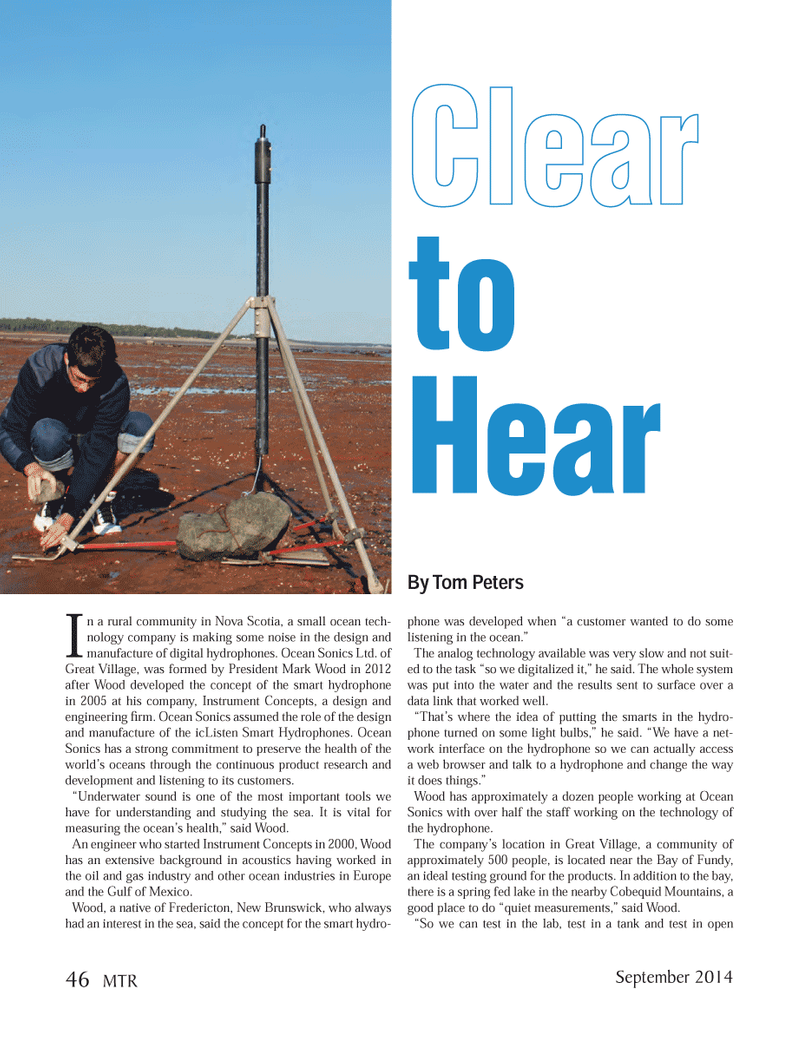
Page 46: of Marine Technology Magazine (September 2014)
Ocean Observation: Gliders, Buoys & Sub-Surface Networks
Read this page in Pdf, Flash or Html5 edition of September 2014 Marine Technology Magazine
I n a rural community in Nova Scotia, a small ocean tech- nology company is making some noise in the design and manufacture of digital hydrophones. Ocean Sonics Ltd. of
Great Village, was formed by President Mark Wood in 2012 after Wood developed the concept of the smart hydrophone in 2005 at his company, Instrument Concepts, a design and engineering fi rm. Ocean Sonics assumed the role of the design and manufacture of the icListen Smart Hydrophones. Ocean
Sonics has a strong commitment to preserve the health of the world’s oceans through the continuous product research and development and listening to its customers. “Underwater sound is one of the most important tools we have for understanding and studying the sea. It is vital for measuring the ocean’s health,” said Wood.
An engineer who started Instrument Concepts in 2000, Wood has an extensive background in acoustics having worked in the oil and gas industry and other ocean industries in Europe and the Gulf of Mexico.
Wood, a native of Fredericton, New Brunswick, who always had an interest in the sea, said the concept for the smart hydro- phone was developed when “a customer wanted to do some listening in the ocean.”
The analog technology available was very slow and not suit- ed to the task “so we digitalized it,” he said. The whole system was put into the water and the results sent to surface over a data link that worked well. “That’s where the idea of putting the smarts in the hydro- phone turned on some light bulbs,” he said. “We have a net- work interface on the hydrophone so we can actually access a web browser and talk to a hydrophone and change the way it does things.”
Wood has approximately a dozen people working at Ocean
Sonics with over half the staff working on the technology of the hydrophone.
The company’s location in Great Village, a community of approximately 500 people, is located near the Bay of Fundy, an ideal testing ground for the products. In addition to the bay, there is a spring fed lake in the nearby Cobequid Mountains, a good place to do “quiet measurements,” said Wood. “So we can test in the lab, test in a tank and test in open
Clear to
Hear
By Tom PetersBy Tom P
September 2014 46 MTR
MTR #7 (34-49).indd 46 8/27/2014 9:42:02 AM

 45
45

 47
47
